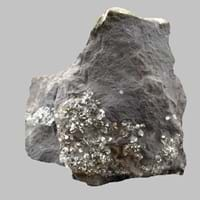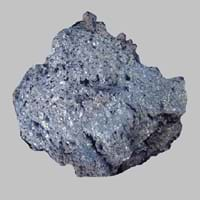Definition
Argillites are highly compact sedimentary or slightly metamorphosed rocks that consist largely or wholly of particles of clay or silt but lack the fissility of shale or the cleavage characteristic of slate
Picrite is a variety of high-magnesium olivine basalt that is very rich in the mineral olivine
Origin
Unknown
Hawaii Islands
Discoverer
Unknown
Unknown
Etymology
From Latin Argilla (clay) and -ite in English which became agrilla+ -ite = Argillite
From Greek pikros bitter + -ite, 19th century
Class
Sedimentary Rocks
Igneous Rocks
Sub-Class
Durable Rock, Soft Rock
Durable Rock, Hard Rock
Group
Not Applicable
Volcanic
Other Categories
Fine Grained Rock, Opaque Rock
Fine Grained Rock, Opaque Rock
Texture
Clastic, Polished
Earthy, Rough
Color
Dark Grey to Black, Pink, Red, White
Black, Brown, Colourless, Green, Grey, Pink, White, Yellow
Durability
Durable
Durable
Scratch Resistant
Yes
Yes
Appearance
Rough and Dull
Rough and Shiny
Interior Uses
Decorative Aggregates, Homes, Interior Decoration
Countertops, Decorative Aggregates, Homes, Interior Decoration
Exterior Uses
As Building Stone, Garden Decoration, Office Buildings
As Building Stone, As Facing Stone, Garden Decoration, Paving Stone
Other Architectural Uses
Curbing, Whetstones
Curbing
Construction Industry
Used for flooring, stair treads, borders and window sills.
As a Sintering Agent in Steel Industry to process Iron Ore, Cement Manufacture, for Road Aggregate, Manufacture of Magnesium and Dolomite Refractories, Roadstone, Used for flooring, stair treads, borders and window sills.
Medical Industry
Not Yet Used
Not Yet Used
Antiquity Uses
Artifacts, Monuments, Sculpture
Artifacts, Monuments, Sculpture
Commercial Uses
Fire resistant, Used to manufracture paperweights and bookends
As a Feed Additive for Livestock, As armour rock for sea walls, Metallurgical Flux, Pottery, Source of Magnesia (MgO)
Types
Not Available
Oceanite
Features
Is one of the oldest rock
Host Rock for Lead
Archaeological Significance
Famous Monuments
Data Not Available
Data Not Available
Famous Sculptures
Data Not Available
Data Not Available
Pictographs
Used
Not Used
Petroglyphs
Used
Not Used
Formation
An argillite is a fine-grained sedimentary rock mainly composed of clay particles which forms from lithified muds which contain variable amounts of silt-sized particles.
Picrite is a fine-grained, hard rock which is a type of metasomatite, essentially altered basalt. It forms with or without crystallization, either below the surface as intrusive rocks or on the surface as extrusive rocks.
Mineral Content
Biotite, Chlorite, Feldspar, Micas, Muscovite or Illite, Plagioclase, Pyrite, Quartz
Biotite, Olivine, Plagioclase, Pyrrhotite
Compound Content
Iron(III) Oxide, Potassium Oxide, MgO, Silicon Dioxide
Al, CaO, Carbon Dioxide, Mg, MgO
Types of Metamorphism
Not Applicable
Burial Metamorphism, Cataclastic Metamorphism, Impact Metamorphism, Regional Metamorphism
Types of Weathering
Biological Weathering
Biological Weathering
Types of Erosion
Chemical Erosion
Chemical Erosion, Coastal Erosion, Glacier Erosion, Sea Erosion, Water Erosion, Wind Erosion
Grain Size
Fine Grained
Fine Grained
Fracture
Conchoidal to Uneven
Uneven
Streak
White to Grey
White, Greenish White or Grey
Porosity
Highly Porous
Less Porous
Luster
Waxy and Dull
Subvitreous to Dull
Compressive Strength
Not Available
Specific Gravity
2.56-2.68
2.75-2.92
Transparency
Opaque
Opaque
Density
2.54-2.66 g/cm3
1.5-2.5 g/cm3
Resistance
Heat Resistant, Impact Resistant
Heat Resistant
Deposits in Eastern Continents
Asia
Bangladesh, China, India, Russia
India, Russia
Africa
Ethiopia, Kenya, Morocco, South Africa, Tanzania
South Africa
Europe
Austria, France, Germany, Greece, Italy, Romania, Scotland, Spain, Switzerland
Iceland
Others
Not Yet Found
Not Yet Found
Deposits in Western Continents
North America
USA
Canada, USA
South America
Bolivia, Chile, Colombia, Ecuador, Peru, Venezuela
Brazil
Deposits in Oceania Continent
Australia
New South Wales, New Zealand, Queensland, Victoria, Western Australia
Not Yet Found
All about Argillite and Picrite Properties
Know all about Argillite and Picrite properties here. All properties of rocks are important as they define the type of rock and its application. Argillite belongs to Sedimentary Rocks while Picrite belongs to Igneous Rocks.Texture of Argillite is Clastic, Polished whereas that of Picrite is Earthy, Rough. Argillite appears Rough and Dull and Picrite appears Rough and Shiny. The luster of Argillite is waxy and dull while that of Picrite is subvitreous to dull. Argillite is available in dark grey to black, pink, red, white colors whereas Picrite is available in black, brown, colourless, green, grey, pink, white, yellow colors. The commercial uses of Argillite are fire resistant, used to manufracture paperweights and bookends and that of Picrite are as a feed additive for livestock, as armour rock for sea walls, metallurgical flux, pottery, source of magnesia (mgo).










